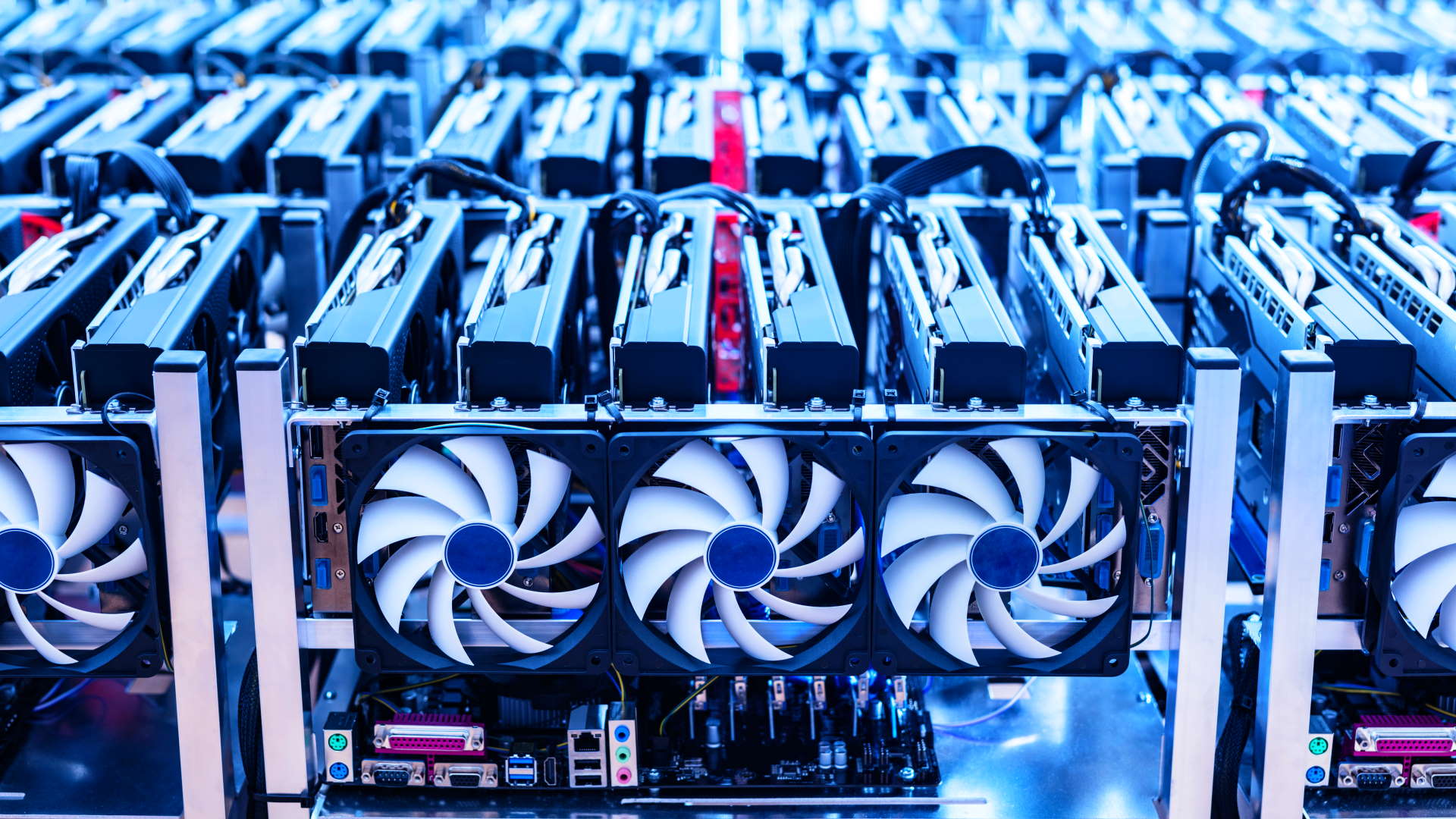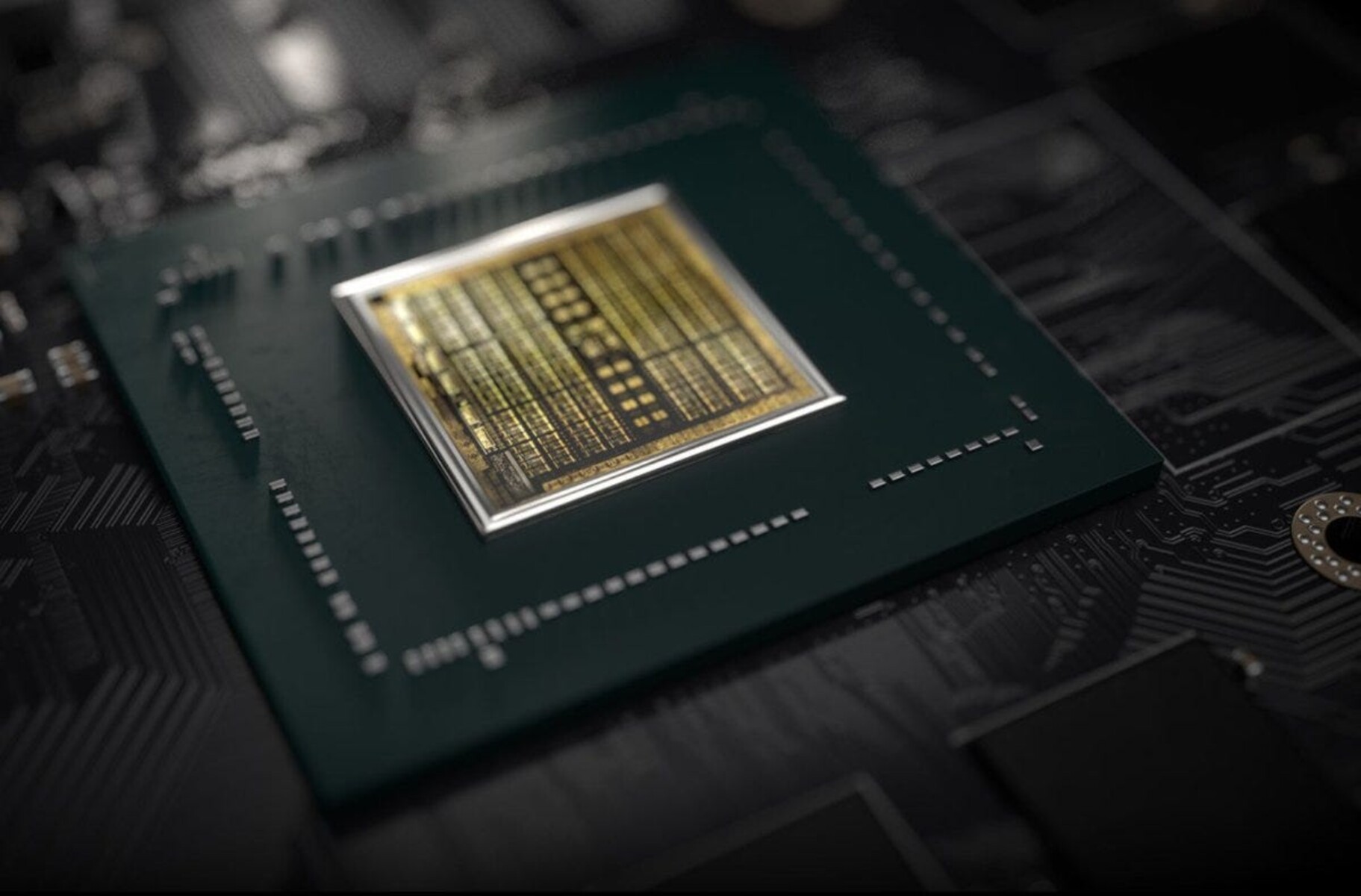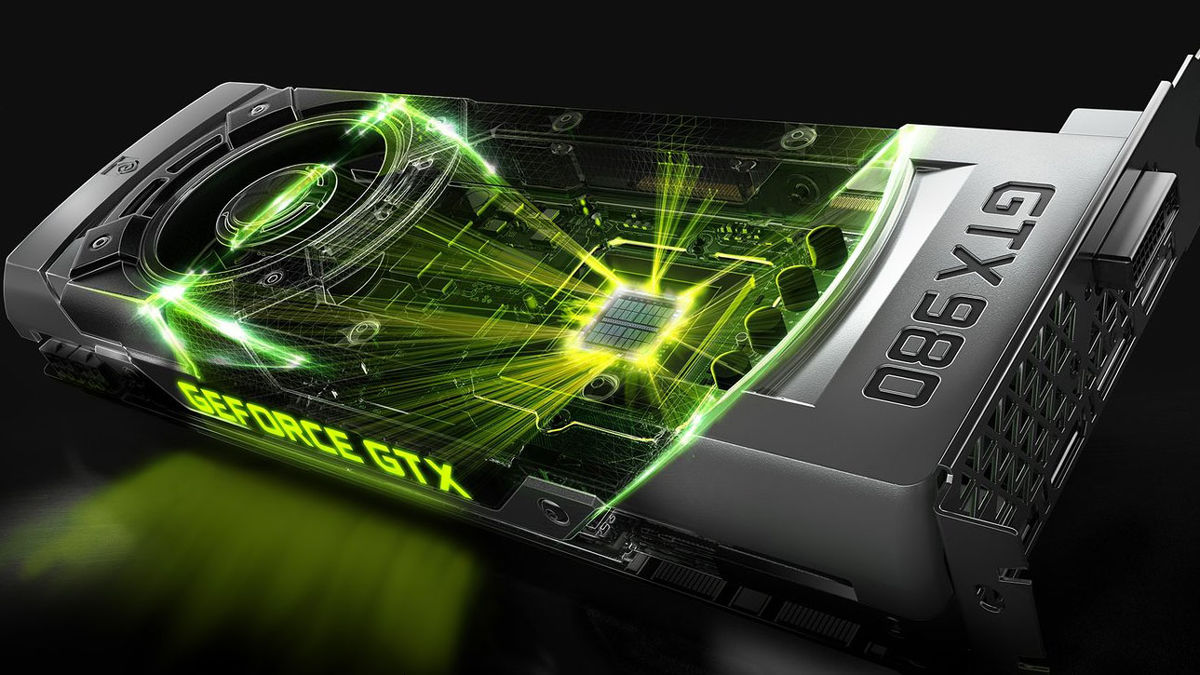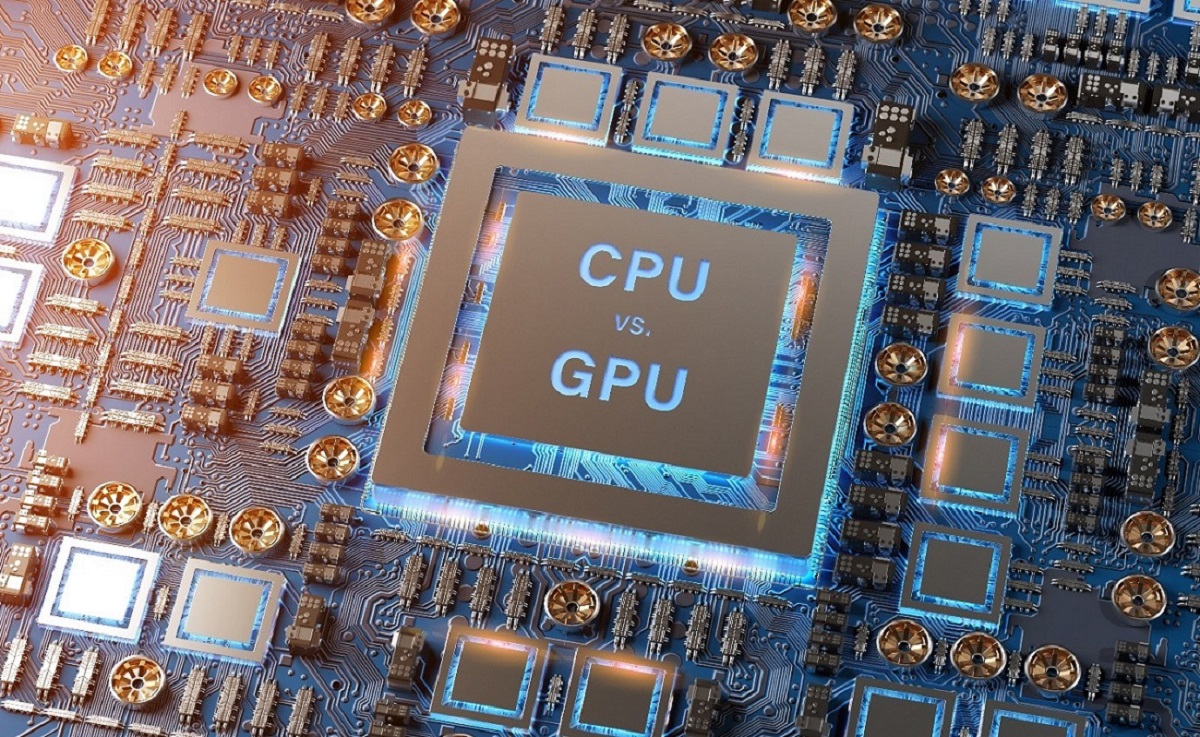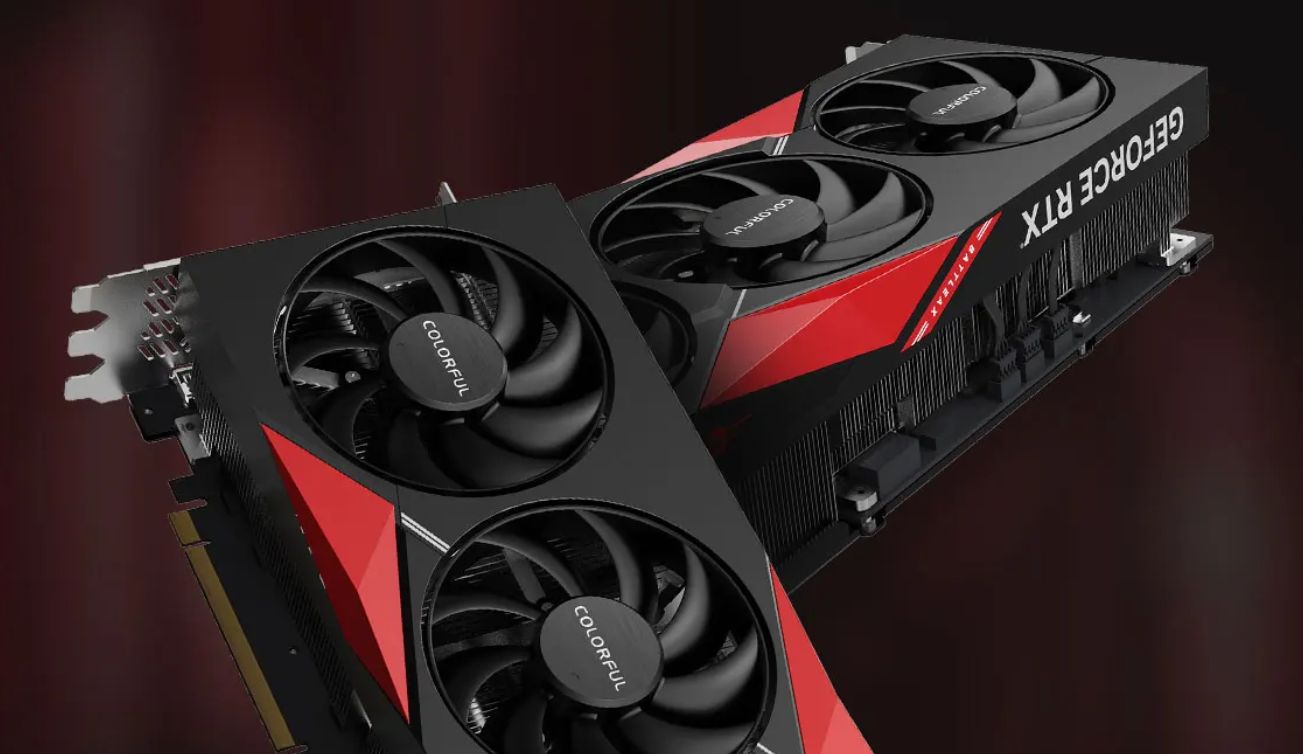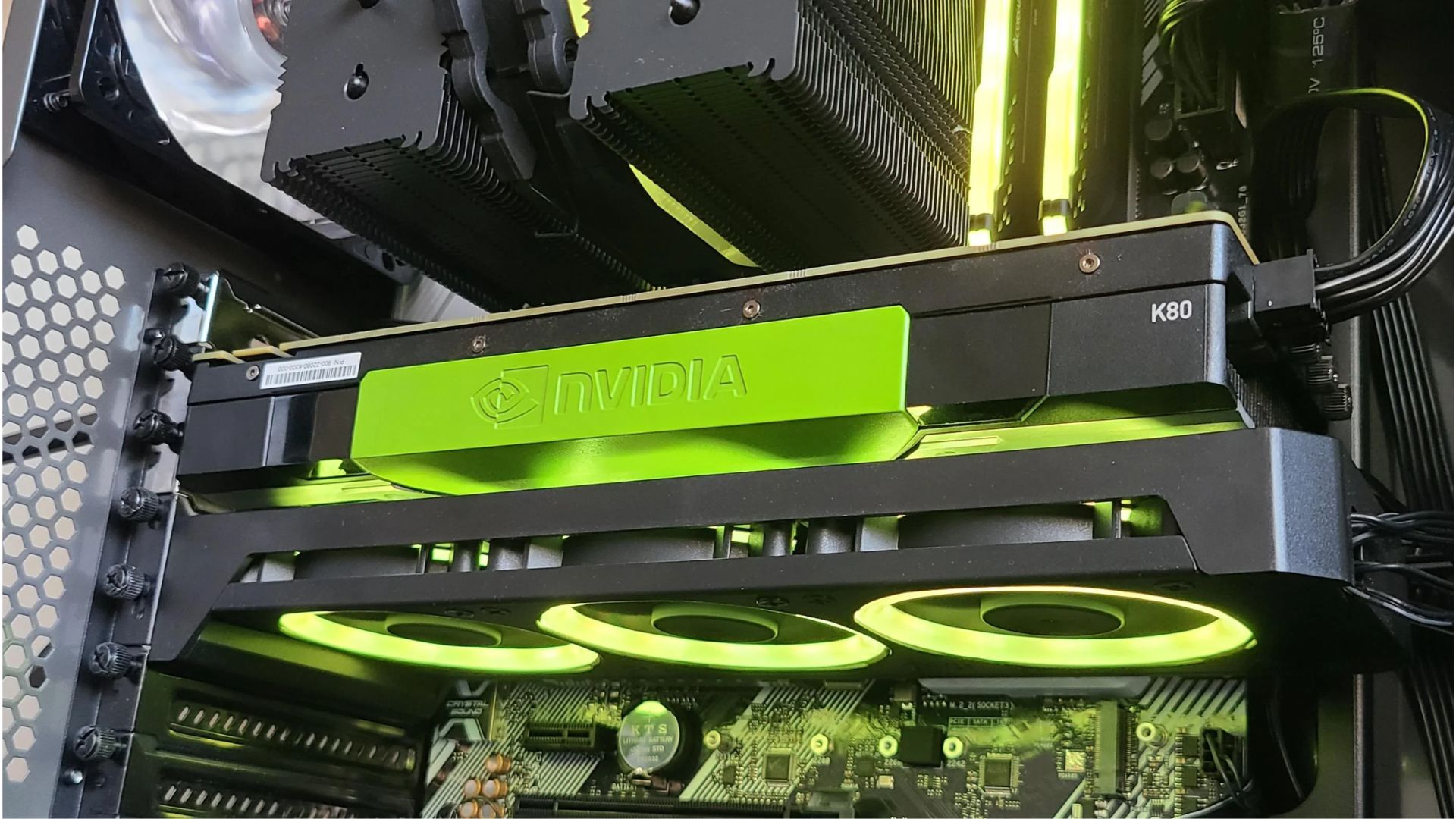Introduction
Deep learning has revolutionized the field of artificial intelligence, enabling significant advancements in areas like computer vision, natural language processing, and speech recognition. At the heart of this technology are powerful hardware components, particularly Graphics Processing Units (GPUs). GPUs have emerged as the preferred choice for deep learning tasks due to their parallel processing capabilities, which excel at handling the massive computational requirements of neural networks.
In this article, we will explore the importance of GPUs in deep learning and discuss the key factors to consider when choosing the right GPU for your deep learning projects. Whether you are a researcher, data scientist, or machine learning enthusiast, selecting the optimal GPU can significantly impact the execution speed and performance of your models.
When it comes to deep learning, speed is crucial. Training complex neural networks can take days or even weeks on standard CPUs, but with the power of GPUs, these training times can be drastically reduced to just a few hours or even minutes. The parallel architecture of GPUs allows for the simultaneous execution of multiple computational tasks, speeding up the training process and enabling real-time inference on large datasets.
Additionally, GPUs provide the necessary memory bandwidth and processing power to efficiently handle the immense amount of matrix calculations required for deep learning models. With their numerous CUDA cores, GPUs are designed to perform matrix operations in parallel, providing a significant advantage over CPUs.
Another critical factor to consider is the memory capacity of the GPU. Deep learning models often require large amounts of memory to store the parameters and intermediate computations. Insufficient memory can lead to out-of-memory errors and hinder the training process. Therefore, choosing a GPU with ample memory capacity is essential for handling complex deep learning tasks.
As the field of deep learning continues to evolve rapidly, GPU manufacturers have been investing heavily in developing specialized hardware that caters specifically to deep learning workloads. NVIDIA, with its GeForce, Titan, and Tesla series, has been at the forefront of this innovation, while AMD has also made significant strides with its Radeon Instinct line-up.
In the following sections, we will dive deeper into the key factors to consider when choosing a GPU for deep learning, explore the architecture and memory aspects, and highlight some of the top GPUs in the market that are well-suited for deep learning tasks.
What is GPU and Why it Matters in Deep Learning
A Graphics Processing Unit (GPU) is a specialized electronic circuit that performs highly parallel processing tasks, primarily related to rendering and displaying images, videos, and animations. Originally designed for gaming and multimedia applications, GPUs have found a prominent role in deep learning due to their ability to rapidly perform numerous calculations simultaneously.
So, why do GPUs matter in the context of deep learning? The answer lies in the intensive computational nature of neural networks. Deep learning models consist of interconnected layers of artificial neurons that process and transform input data through a series of mathematical operations. These operations involve complex matrix multiplications and nonlinear activations, which require a vast amount of numerical calculations to be performed in parallel.
GPUs excel at these types of computations through their massively parallel architecture. Unlike CPUs, which typically have a few cores optimized for sequential tasks, GPUs have thousands of smaller cores capable of executing tasks simultaneously. This parallelism enables GPUs to process and handle large datasets efficiently, leading to faster training and inference times for deep learning models.
Parallel computing is particularly beneficial for tasks like convolutional neural networks (CNNs), which are widely used in computer vision applications. CNNs consist of multiple convolutional layers that extract features from input images. Each layer performs convolution operations on the image, requiring extensive matrix multiplications. GPUs, with their parallel processing capabilities, can distribute these calculations across multiple cores, drastically reducing the time needed to process each image.
Furthermore, GPUs provide the necessary computational power to train and infer with larger and more sophisticated models. Deep learning models often require millions or even billions of parameters, resulting in colossal matrix calculations. GPUs can handle these calculations efficiently, enabling researchers and data scientists to experiment with complex architectures and achieve more accurate and robust models.
Another critical aspect is the availability of software frameworks and libraries optimized for GPUs. Popular deep learning frameworks like TensorFlow, PyTorch, and Keras offer GPU support, allowing users to leverage the power of GPUs seamlessly. These frameworks are designed to parallelize calculations and take full advantage of GPU hardware, making it easier than ever to incorporate GPUs into deep learning workflows.
In summary, GPUs play a pivotal role in deep learning by providing the necessary computational power to train complex models efficiently. Their parallel architecture allows for rapid execution of matrix calculations, reducing training times and enabling real-time inference. With the increasing demand for deep learning applications, choosing the right GPU is crucial to ensure optimal performance and productivity for your deep learning projects.
Factors to Consider When Choosing a GPU for Deep Learning
When it comes to selecting a GPU for deep learning, there are several key factors to consider. Each factor plays a significant role in determining the performance, efficiency, and compatibility of the GPU with your deep learning tasks. Let’s explore these factors in more detail:
- GPU Memory Capacity: Deep learning models often require large amounts of memory to store the neural network parameters and intermediate computations. Having sufficient GPU memory is crucial to avoid out-of-memory errors and enable the training of larger models. Consider the memory requirements of your specific deep learning workloads and ensure that the GPU you choose has enough memory capacity.
- GPU Memory Bandwidth: The memory bandwidth of a GPU determines how quickly the GPU can read from and write to its memory. Higher memory bandwidth allows for faster data transfer, reducing the time spent on memory operations and increasing overall performance. Look for GPUs with high memory bandwidth for optimal performance in deep learning tasks.
- CUDA Cores: CUDA cores are the parallel processing units in NVIDIA GPUs. More CUDA cores generally translate to faster computation speed, as they enable parallel execution of calculations. Consider the number of CUDA cores in a GPU, as it directly impacts the GPU’s ability to handle the parallelism inherent in deep learning workloads.
- Compatibility with Deep Learning Frameworks: Ensure that the GPU you choose is compatible with popular deep learning frameworks such as TensorFlow, PyTorch, and Keras. These frameworks often provide GPU support through optimized libraries, allowing you to harness the power of the GPU seamlessly. Check the documentation of the deep learning frameworks to verify compatibility with your chosen GPU.
- Power Requirements: Deep learning models can place significant demands on hardware, including GPUs. It is important to consider the power requirements of the GPU and ensure that your system’s power supply can adequately support it. Additionally, be mindful of the thermal requirements and ensure sufficient cooling to prevent overheating during intense deep learning tasks.
- Price-Performance Ratio: GPUs vary in price, and it’s essential to consider the price-performance ratio when choosing a GPU for deep learning. While high-end GPUs may offer exceptional performance, they may come at a significant cost. Evaluate your budget and requirements to strike the right balance between performance and affordability.
By considering these factors, you can make an informed decision when selecting a GPU for your deep learning endeavors. It’s essential to analyze your specific needs, as different deep learning tasks may have varying requirements in terms of memory, computational power, and compatibility. With the right GPU, you can accelerate your deep learning workflows and unlock the full potential of your models.
Understanding GPU Memory and Architecture
When it comes to deep learning, understanding the GPU’s memory capacity and architecture is crucial in optimizing performance and handling complex neural network computations. Let’s explore these aspects in more detail:
GPU Memory Capacity: The GPU’s memory, also known as video random-access memory (VRAM), is a critical resource in deep learning. It is used to store the parameters of the neural network, intermediate computations during training, and input data for inference. Deep learning models with numerous layers and millions/billions of parameters require a significant amount of memory to operate efficiently. Therefore, it is essential to choose a GPU with sufficient memory capacity to avoid memory-related issues such as out-of-memory errors. Analyze the memory requirements of your specific deep learning workloads and ensure that the GPU you select has enough VRAM to accommodate them comfortably.
GPU Memory Bandwidth: GPU memory bandwidth refers to the rate at which data can be read from or written to the GPU’s memory. Deep learning workloads involve extensive data movement between the GPU’s memory and the GPU’s processing units. A higher memory bandwidth allows for faster data transfer, which translates to increased computational throughput and improved performance. GPUs with higher memory bandwidth are better suited for handling the massive matrix calculations and data-intensive operations required by deep learning models. When choosing a GPU, consider the memory bandwidth as an essential factor in optimizing the overall performance of your deep learning tasks.
GPU Architecture: The GPU’s architecture plays a significant role in determining its computational power and efficiency. Different GPU architectures have varying levels of parallelism, the number of processing units (e.g., CUDA cores in NVIDIA GPUs), and the overall design of the memory subsystem. It’s important to understand the architecture of the GPU you intend to use, as it directly affects the GPU’s ability to handle the parallel processing demands of deep learning workloads. GPUs with more processing units and higher parallelism will generally perform better in deep learning tasks, enabling faster training and inference times for your models.
One widely used GPU architecture for deep learning is NVIDIA’s CUDA architecture. CUDA provides a programming platform that allows developers to harness the parallel processing capabilities of NVIDIA GPUs. By utilizing GPU-specific APIs and libraries, such as cuDNN and cuBLAS, deep learning frameworks can maximize the performance of the GPU for a wide range of deep learning tasks. Understanding the architecture of the GPU and its compatibility with deep learning frameworks can help you make informed decisions when selecting a GPU for your deep learning projects.
Overall, a thorough understanding of GPU memory and architecture is essential for optimizing deep learning performance. By considering the GPU’s memory capacity, memory bandwidth, and architecture, you can ensure that your chosen GPU is well-suited to handle the computational demands of your deep learning workloads. Choosing a GPU that aligns with your specific requirements will enable you to accelerate your deep learning tasks and achieve better results.
The Top GPUs for Deep Learning
When it comes to deep learning, having a powerful GPU is vital for achieving optimal performance and training complex neural networks efficiently. Let’s explore some of the top GPUs that are widely regarded as excellent choices for deep learning tasks:
NVIDIA GeForce RTX 30 Series GPUs: The NVIDIA GeForce RTX 30 Series GPUs, such as the RTX 3080 and RTX 3090, offer impressive performance for deep learning. These GPUs feature the latest Ampere architecture, offering a significant leap in performance compared to their predecessors. With a high number of CUDA cores and large amounts of VRAM, the GeForce RTX 30 Series GPUs excel in handling parallel computations and memory-intensive deep learning workloads. The inclusion of Tensor Cores also enables faster training times, especially when using frameworks that leverage NVIDIA’s deep learning libraries like cuDNN and TensorRT.
NVIDIA Titan V: The Titan V is a high-end GPU from NVIDIA specifically designed for deep learning tasks. It features the Volta architecture with a massive number of CUDA cores and a generous 12 GB of VRAM. The Titan V provides extraordinary compute power and memory capacity, making it ideal for training large-scale deep learning models. Its advanced tensor cores allow for fast matrix computations, accelerating the training process. Although the Titan V comes at a premium price, it offers unparalleled performance for deep learning enthusiasts and researchers.
NVIDIA Tesla V100: The Tesla V100 is a powerhouse GPU designed for AI and deep learning workloads. With the Volta architecture and a staggering 5,120 CUDA cores, the Tesla V100 delivers exceptional computing capabilities. It features high memory bandwidth and a substantial 16 GB or 32 GB of VRAM, making it suited for large-scale deep learning tasks that demand significant memory capacity. The Tesla V100 is commonly found in data centers and research facilities due to its outstanding performance and extensive support for AI-focused libraries and frameworks.
AMD Radeon Instinct MI100: The Radeon Instinct MI100 is AMD’s flagship GPU for AI and deep learning applications. It boasts the CDNA architecture and leverages the ROCm software platform, providing strong performance and compatibility with popular deep learning frameworks. With its 7nm chip and a massive number of compute units, the MI100 excels in parallel processing tasks. It offers 32 GB of high-bandwidth memory (HBM2), ensuring ample memory capacity for demanding deep learning workloads.
These GPUs represent some of the top choices for deep learning tasks, each offering its own combination of performance, memory capacity, and compatibility with deep learning frameworks. However, it’s important to note that personal requirements and budget should also be considered when selecting a GPU. Evaluating the specific needs of your deep learning projects, the size of your datasets, and the complexity of your models will help in identifying the most suitable GPU for your requirements.
By leveraging the horsepower of these top GPUs, deep learning practitioners can significantly speed up training times, enable real-time inference, and tackle more complex and larger-scale deep learning projects with ease.
NVIDIA GeForce RTX 30 Series GPUs
The NVIDIA GeForce RTX 30 Series GPUs have taken the deep learning community by storm since their release. With their powerful hardware and advanced features, these GPUs offer exceptional performance for a wide range of deep learning applications.
The GeForce RTX 30 Series GPUs, including the RTX 3080 and RTX 3090, are built on the latest Ampere architecture, a significant upgrade from the previous generation. These GPUs feature a massive number of CUDA cores, providing unparalleled parallel processing capabilities. This allows deep learning models to be trained and executed faster, greatly reducing the time required for experimentation and deployment.
One of the standout features of the GeForce RTX 30 Series is the inclusion of Tensor Cores. These dedicated hardware units specialize in matrix operations and can accelerate deep learning tasks, particularly those involving neural networks. By leveraging the Tensor Cores, frameworks that support NVIDIA’s deep learning libraries, such as cuDNN and TensorRT, can achieve even faster training times and improved inference performance.
Another notable feature of the GeForce RTX 30 Series GPUs is the increased memory capacity. The RTX 3080 comes with 10 GB of GDDR6X VRAM, while the RTX 3090 boasts a massive 24 GB. This expanded memory capacity allows deep learning practitioners to work with larger datasets without having to compromise on performance. It also enables the training of more memory-intensive models, further pushing the boundaries of deep learning capabilities.
Moreover, the GeForce RTX 30 Series GPUs offer dynamic resolution scaling, ray tracing capabilities, and advanced AI rendering features. These features not only enhance the visual quality of deep learning applications but also provide potential for utilizing advanced rendering techniques and AI-assisted image generation tasks.
With their impressive performance and features, the NVIDIA GeForce RTX 30 Series GPUs are highly sought after by deep learning researchers, data scientists, and enthusiasts alike. They offer the power and efficiency required for tackling demanding deep learning workloads, making them a top choice for anyone looking to accelerate their deep learning projects.
However, it’s important to consider the cost and power requirements when considering the GeForce RTX 30 Series GPUs. These GPUs are high-end and come at a premium price. Additionally, their power consumption can be significant, so ensuring that your system’s power supply can handle the GPU’s demands is crucial.
In summary, the NVIDIA GeForce RTX 30 Series GPUs are a game-changer in the world of deep learning, delivering exceptional performance, increased memory capacity, and advanced features. With their revolutionary architecture and dedicated hardware for deep learning, these GPUs provide a significant boost to training and inference times, enabling researchers and practitioners to unlock new levels of performance and efficiency in their deep learning projects.
NVIDIA Titan V
The NVIDIA Titan V is a high-performance GPU specifically designed for deep learning and scientific computing tasks. It is part of NVIDIA’s Titan series, which caters to users who require the utmost power and performance. The Titan V is built on the Volta architecture and offers exceptional capabilities for deep learning applications.
One of the standout features of the Titan V is its immense compute power. With a whopping 5,120 CUDA cores, this GPU delivers an incredible amount of parallel processing capabilities. This allows for highly efficient execution of complex deep learning models, significantly reducing training times and enabling researchers to explore more intricate network architectures and larger datasets.
The Titan V is equipped with 12 GB of high-bandwidth memory (HBM2), allowing for the storage and manipulation of large model parameters and intermediate computations during training. The ample memory capacity ensures smooth operation even with memory-intensive deep learning workloads, reducing the likelihood of encountering out-of-memory errors.
Another noteworthy feature of the Titan V is the inclusion of Tensor Cores. These dedicated hardware units accelerate matrix calculations, making the Titan V a powerhouse for deep learning tasks that heavily rely on matrix operations. The Tensor Cores, coupled with the immense compute power and memory capacity, facilitate lightning-fast training and inference of deep neural networks.
Moreover, the Titan V benefits from the Volta architecture’s powerful simultaneous multithreading capability. This allows multiple threads to be executed simultaneously, further maximizing parallel processing and boosting performance for deep learning workloads.
While the Titan V undoubtedly offers exceptional performance, it is worth noting that it comes at a premium price point. This GPU is targeted towards professional researchers and data scientists who require the utmost power and capabilities for their work. It may not be the most cost-effective option for casual deep learning enthusiasts or hobbyists.
Overall, the NVIDIA Titan V is a top-tier GPU that is specifically designed for deep learning tasks. Its immense compute power, generous memory capacity, and dedicated Tensor Cores make it a formidable choice for demanding deep learning workloads. For researchers, data scientists, and professionals seeking the highest level of performance and computational capabilities, the Titan V is a worthwhile investment.
NVIDIA Tesla V100
The NVIDIA Tesla V100 is a flagship GPU designed to deliver exceptional performance for deep learning and AI applications. Built upon the Volta architecture, the Tesla V100 is renowned for its immense computational power, memory capacity, and advanced features.
At the heart of the Tesla V100 lies a staggering 5,120 CUDA cores, ensuring unparalleled processing capabilities. This massive number of cores enables the Tesla V100 to handle the complex and computationally intensive workloads of deep learning models with remarkable efficiency. With this GPU, researchers and data scientists can train and infer with large-scale deep learning models, unlocking greater accuracy and pushing the boundaries of what is possible in the field.
In addition to its computing power, the Tesla V100 offers an impressive 16 GB or 32 GB of high-bandwidth memory (HBM2), depending on the version. This high memory capacity allows for the storage and manipulation of extensive neural network parameters, facilitating the training of models that demand substantial memory resources.
The Tesla V100 is also equipped with innovative Tensor Cores, specialized hardware units that excel in performing mixed-precision matrix calculations. These Tensor Cores dramatically accelerate deep learning tasks by delivering higher throughput for matrix operations. By harnessing the power of Tensor Cores, researchers can achieve faster training times and more efficient inference, ultimately enabling the exploration of complex models and experimental approaches.
Another advantage of the Tesla V100 is its compatibility with NVIDIA’s NVLink technology. NVLink allows multiple GPUs to communicate with each other at extremely high speeds, enabling researchers to scale their deep learning workloads across multiple GPUs for even greater performance gains.
Moreover, the Tesla V100 is widely supported by popular deep learning frameworks, including TensorFlow and PyTorch. Several of these frameworks provide optimized libraries that take full advantage of the Tesla V100’s architecture, further maximizing performance and improving the efficiency of deep learning workflows.
While the Tesla V100 offers exceptional performance, it is primarily targeted towards data centers and research facilities due to its high cost. Its comprehensive feature set, massive compute power, and generous memory capacity make it an excellent choice for organizations and developers working on complex deep learning projects requiring substantial computational resources.
In summary, the NVIDIA Tesla V100 GPU is a powerhouse for deep learning tasks, offering immense computational power, ample memory capacity, and advanced features like Tensor Cores and NVLink technology. It is a preferred choice for researchers, data scientists, and organizations looking to tackle large-scale and compute-intensive deep learning workloads with ease.
AMD Radeon Instinct MI100
The AMD Radeon Instinct MI100 is an impressive GPU that caters specifically to AI and deep learning applications. With its cutting-edge architecture and advanced features, the MI100 offers significant computational power and efficiency for demanding deep learning workloads.
At the heart of the MI100 is the CDNA architecture, developed by AMD to optimize performance for AI-driven tasks. The CDNA architecture incorporates a large number of compute units, allowing for highly efficient parallel processing. This makes the MI100 well-suited for deep learning models that heavily rely on parallelization, extracting optimal performance from neural network computations.
The GPU’s compute unit design enables extensive concurrency, allowing for simultaneous execution of numerous threads and parallel operations. This concurrency optimization enhances the performance of deep learning workloads, reducing training and inference times for complex models.
One of the standout features of the MI100 is its generous 32 GB of high-bandwidth memory (HBM2). The ample memory capacity provides room for memory-intensive deep learning models, enabling the efficient storage and manipulation of large sets of parameters and intermediate computations. This facilitates the training of more expansive and intricate models, pushing the boundaries of deep learning capabilities.
When it comes to deep learning, efficient communication and data movement are crucial. The MI100 incorporates advanced Infinity Fabric technology, allowing for enhanced data transfers and low-latency communication between GPU components. This technology minimizes bottlenecks and maximizes computational throughput, ultimately improving the performance and efficiency of deep learning tasks.
The MI100 is also optimized for a range of deep learning frameworks and libraries, ensuring compatibility and ease of integration into existing deep learning workflows. AMD’s ROCm software platform provides developers with a comprehensive suite of tools and libraries designed to leverage the power of the MI100, allowing for efficient execution of deep learning tasks within the AMD ecosystem.
It is worth noting that the MI100 is specifically designed for professional use in data centers and research facilities. As such, it may have a higher price point compared to consumer-grade GPUs. However, for organizations and researchers requiring top-tier performance for their deep learning workloads, the investment in the MI100 can present a valuable opportunity to accelerate their AI-driven projects.
In summary, the AMD Radeon Instinct MI100 is a remarkable GPU that caters specifically to AI and deep learning applications. With its CDNA architecture, generous memory capacity, advanced communication technologies, and optimized software ecosystem, the MI100 offers a compelling solution for organizations and researchers seeking high-performance deep learning capabilities.
Conclusion
Choosing the right GPU for deep learning is crucial to achieving optimal performance, reducing training times, and unlocking the full potential of your models. Throughout this article, we have discussed the importance of GPUs in deep learning, the factors to consider when selecting a GPU, and explored some of the top GPUs in the market.
GPUs play a vital role in deep learning by providing the necessary computational power and parallel processing capabilities to handle the intensive tasks involved in training and inference. The memory capacity and bandwidth of a GPU are critical considerations, as they determine the ability to handle large datasets and complex neural network models.
When selecting a GPU, it is important to consider factors such as GPU memory capacity, memory bandwidth, CUDA cores, compatibility with deep learning frameworks, power requirements, and the price-performance ratio. Evaluating these factors will help you find the optimal GPU that aligns with your specific needs, budget, and deep learning workloads.
We have explored some of the top GPUs available for deep learning, including the NVIDIA GeForce RTX 30 Series GPUs, NVIDIA Titan V, NVIDIA Tesla V100, and AMD Radeon Instinct MI100. Each GPU offers its own unique strengths in terms of compute power, memory capacity, architecture, and price. Consider your requirements and budget to determine the GPU that best suits your deep learning projects.
Keep in mind that deep learning is a rapidly evolving field, and GPU technology continues to advance. It is essential to stay updated on the latest advancements and releases, as new GPUs may offer even more power and efficiency for deep learning tasks.
In conclusion, selecting the right GPU for deep learning is a strategic decision that can significantly impact the performance, productivity, and success of your deep learning projects. By carefully considering the factors we discussed and exploring the top GPUs available, you can make an informed choice that enables you to harness the power of deep learning and achieve remarkable results.







